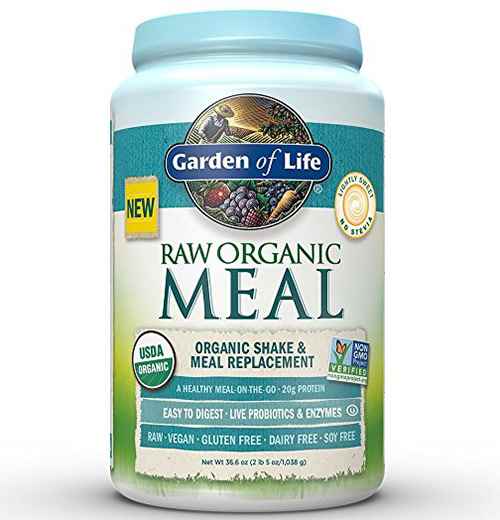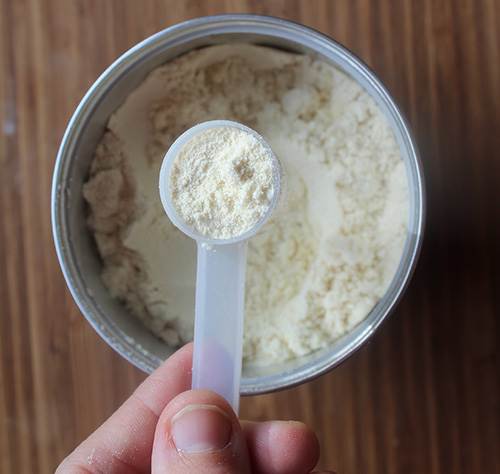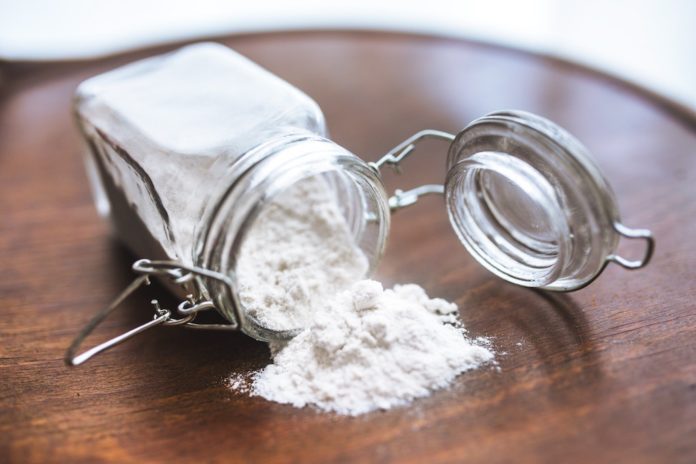We all need protein to survive, but protein rich foods are some of the hardest things to store and cook. Protein rich canned goods like tuna and beans are heavy to carry and thus hard to transport if you need to relocate in a hurry. Dried meats and jerky can be monotonous, and no matter how you spruce it up, jerky is jerky. Beans are simple, cheap and nutritious, but they take hours (and a lot of fuel) to cook.
Protein powder is a bit different. For the most part, it’s invisible in your food. Think about those instant mashed potatoes in your preps that last just about forever. What if you could take those potatoes, and make them a protein rich complete meal? Simple enough, just sprinkle on a bit of protein powder.
Portable Nutrient Rich Meals
Just about any food can be fortified with a quick spoonful of protein powder to help it keep you full longer. That can be vital if you’re traveling and don’t have the option of stopping often for meals.
While dried beans are a staple in many preps, they take hours to fully cook, and aren’t a practical option for protein while traveling. Rice on the other hand is relatively quick cooking, and with the addition of protein powder it can be a full meal that will stay with you much longer than plain rice alone.

There’s also the option of flavored varieties, which makes your meal even more portable. Many flavored varieties are actually designed to be consumed as a “meal on the go” and come equipped with a thermos with a whisk ball inside. Just add the powder, some water and shake for a full meal.
If you’ve ever drunk water that has been purified with iodine tablets, you know that iodine flavor can be tough to choke down. Many campers bring along cool-aid packets to hid the taste, but why just hide it with sugar when you can get your hydration and a meal by using flavored protein powder?
Prepping with Children
Preparing with kids can be tricky, especially if you’ve got picky eaters. After a disaster, tensions can run high, and it’s nice to be able to offer your kids comfort foods you’ll know they’ll eat. Go right ahead and store those comfort foods and provide them over and over without guilt, fortified with a bit of protein powder.
Your kids will get the security blanket they need in troubled times, and you’ll have the piece of mind of knowing that their nutritional needs are being met as they adjust to what is now their new normal.
Food Options for Sick and Injured
Since protein powder is designed as a nutritional supplement, many varieties include added vitamins and minerals, which only furthers their value as a prep.
With the chaos of an emergency situation, there’s a significant chance that you or someone you love will become sick or injured. Any trauma to the face or mouth is going to leave you unable to chew for some time. If you’re prepped with jerky, that means you’re a bit short on protein options for this contingency.
While it’s hard to plan for convalescing foods on top of your regular preps, but if you have protein powder you can ensure a good liquid nutrition option that’s perfect for both the sick and healthy.
How Long Does Protein Powder Last?
The printed expiration dates on protein powder say that it’ll remain good for 2 full years. We all know that “expiration dates” don’t tell the whole story. While it may be good as they day it was purchased for 2 full years, it’ll probably keep quite a bit longer.
Coconut oil has a printed expiration date of 2 years, but practically speaking it’s still fine for 5 years or more without noticeable deterioration if it’s sealed and stored in a cool place out of direct sunlight.
Use your best judgement. If you’re storing protein powder, it should be something that your family gets used to consuming well before an emergency situation. As the old adage goes, store what you use and use what you store.
Keep a 2 year supply on hand, and replenishing it and turning your stock as you use it. Know that it will likely last much longer if need be. Even at a decade out, it may not taste the best, but so long as it hasn’t been wet or contaminated, it’ll still be nutritious and shouldn’t cause you harm.
Types of Protein Powder
There are a lot of different types of protein powder, enough to satisfy just about any dietary restriction. Different varieties are sourced from whey protein, goat milk protein, pea protein, peanut protein, egg protein, hemp protein, rice protein… the list goes on.
It comes sweetened with flavorings (strawberry, chocolate, etc) and unsweetened/unflavored. Both types have their own uses, one as a flavored shake on it’s own and the other to enhance other meals.

If you do choose the sweetened variety, be sure you choose a naturally sweetened variety with real sugar. In an emergency situation, you don’t want something filled with zero calorie sweeteners, you’ll need every calorie you can get.
A single serving generally contains between 15 and 25 grams of protein, with animal protein sources (whey, etc) being on the higher end. The average adult male needs around 50 grams while sedentary, and substantially more based on activity. If you can handle animal products, go with the higher protein versions to ensure you’re getting more nutrition into limited prep storage space.
How to Use Protein Powder
While ready to eat shakes from sweetened and flavored protein powders are an obvious use, there’s plenty of other ways to incorporate protein powder into your meals before and after an emergency situation.
Protein powder can be substituted for part of the flour in pancakes or baked goods. Try adding it to sauces and creamy soups. Traditional carb heavy dishes like oatmeal and mashed potatoes are another good place to use it.
Get creative! Take a look at your long term storage food preps, many of which may be freeze dried and stored in canisters. When you’re re-hydrating food, it’s easy enough to add in a scoop of unflavored protein powder to just about anything.




















